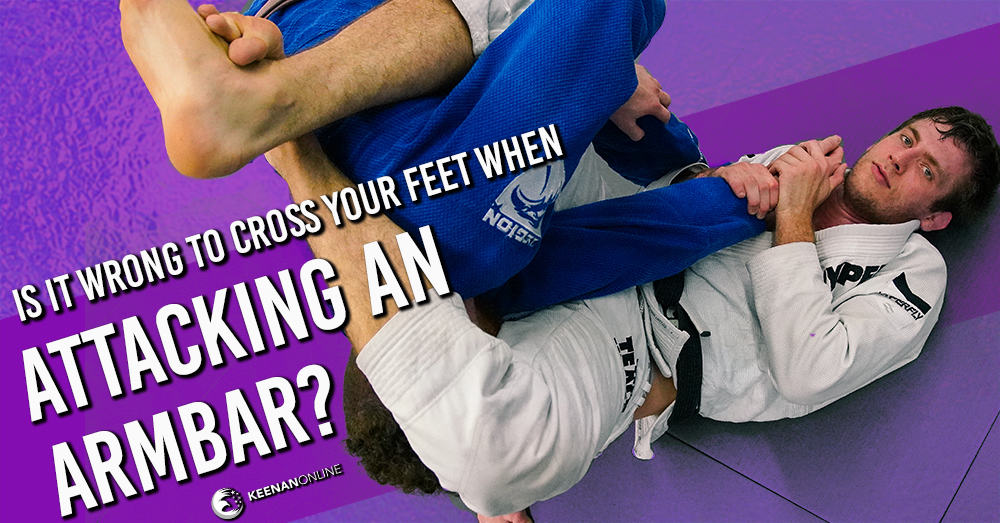
What do you think, is it really wrong to cross your feet when attacking an armbar?
Googling the reason for that skin rash on your elbow, opening email links from your brother in law, listening to business pitches that begin with “I know what you’re thinking, but trust me, this isn’t a pyramid scheme” and crossing your feet when attacking an armbar are all examples of things we’re told never to do.
And while most of those pieces of advice have solid reasoning behind them: listed in order; cancer, seeing two people do something to a cup you can’t ever unsee, and becoming that person everyone avoids at parties and get-togethers…
Crossing your feet in an armbar is one of those no-nos you’ve been warned against, but rarely given the reasons why you shouldn’t be doing it.
So, let me ask you…
Is there actually an argument against doing so? The short answer, yes, there is…
However, can crossing your feet in the armbar actually help you? Yes, that is also true.
But, how can this be possible?

How can we have an argument against crossing the feet to finish the armbar, but also benefit from crossing the feet when finishing the armbar?
The answer, my friend, comes down to context and as you’ll find, not everything in jiu jitsu is always so clear cut.
Jiu Jitsu is a game of nuances rather than a statement of absolutes. And in this article, we’re going to pull apart an age-old maxim to provide you with a little perspective on whether or not you should cross your feet when attacking an armbar.
And to do that, let’s first dive into…
IS IT REALLY WRONG TO CROSS YOUR FEET WHEN ATTACKING AN ARMBAR? THE ANSWER MAY SURPRISE YOU
So, the main argument against crossing your feet to finish the armbar is essentially pinned on your ability to secure your opponent’s arm in place between your legs.
The logic being that to break the arm, you need to first apply pressure on either side of the arm closest to shoulder to create a fulcrum, that is a point of purchase.
This point purchase allows you to create rigidity in the arm, which is essential for an efficient break.
Compare a piece of wet spaghetti to a piece of dry spaghetti: which of the two would be the easiest to break?
If you said the dry piece, you’ve earned yourself a gold star.
Here you go…

If you said the wet piece of spaghetti, you get a gold start too…

That’s right, when it comes to breaking bones the general rule is, the more we can make the joint we intend to break rigid, the easier it will be to break.
So, what does this have to do with crossing the feet?
Well, conventional wisdom states that crossing your feet creates another point of purchase down at your ankles that can, in theory, reduce the capacity for squeezing the arm at your intended point of purchase: your thighs.
Take this pair of scissors as an example…
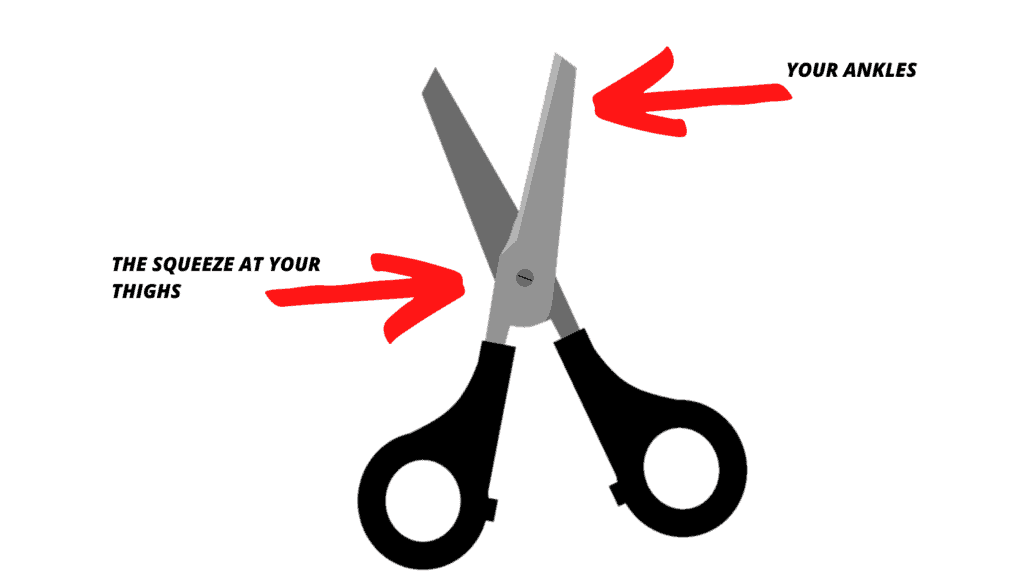
Now let’s look at a section of a scissor lift…
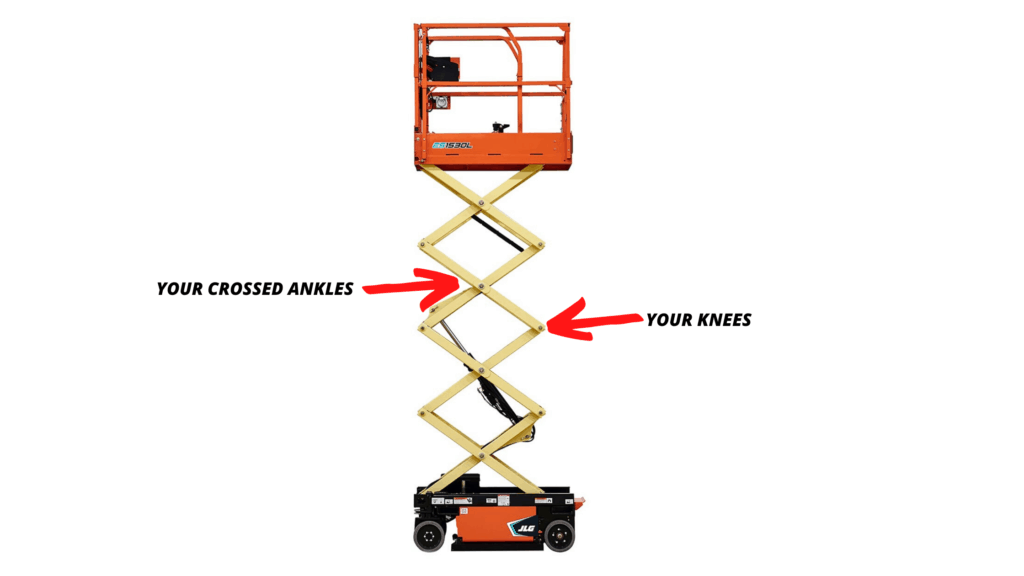
Notice how the joint, representing the knees, is open as a result of the joint above it representing the connected ankles?
This is essentially the argument against crossing the feet.
While you won’t necessarily open your knees to the wide degree pictured above, you will have less of a purchase on your opponent’s arm at your thighs compared to not crossing your feet.
And while that loss in purchase may feel minuscule to you, it can often be a bright shining luminescent exit sign pointing the way to freedom for your opponent.
(I know, the scissor and scissor lift analogy above isn’t perfect, but it’s helped me conceptualize this argument in my own head in the past, and I’m sure, all things being equal, it will help you too.)
This decreased squeeze at the thighs, no matter how slight, can gift your opponent with a golden opportunity to move their arm, that is, rotate their elbow out of the breaking point.
And if your opponent can rotate their arm, that means they can also rotate their body.
And if they can rotate their body, they can hit the hitchhiker escape on the road to freedom…
… right?…
… well, not exactly.
Sign up to the Keenan Online newsletter now and we’ll send you free techniques, concepts and various tools from around the web to help you level up your jiu jitsu both on and off the mats.
HOW CROSSING YOUR FEET CAN SHUT DOWN YOUR OPPONENT’S ESCAPES AND HELP YOU FINISH THE ARMBAR
In jiu jitsu, there are truths about every position and submission that serve as the difference between being successful or unsuccessful.
However, as I mentioned earlier, within these truths, there are nuances that also need to be considered.
In the archetypal armbar position, your opponent’s arm is extended and the placement of your hips (represented by Keenan’s fist in the image below) serve as the block – or fulcrum – underneath.
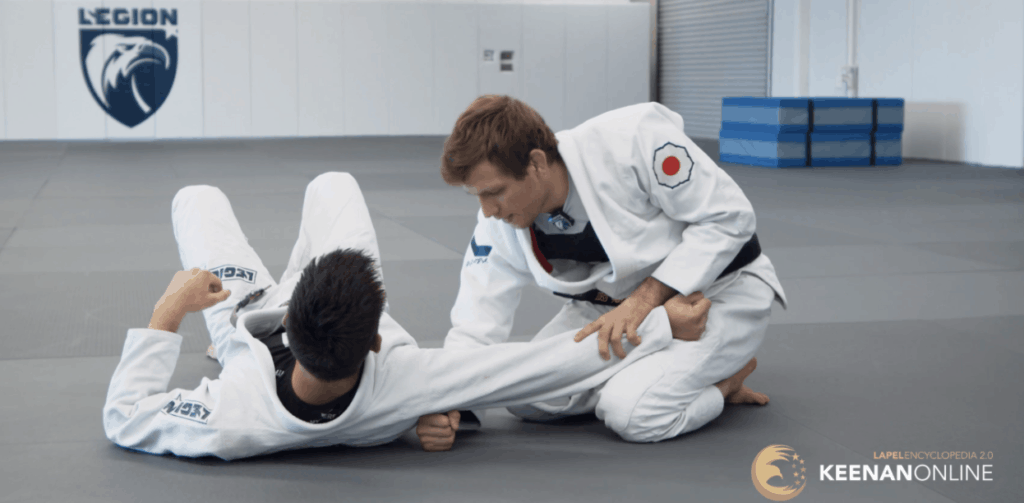
Maintaining control of your opponent’s wrist with your hands means they cannot turn away from you.
Your legs over your opponent’s face and body also make it difficult for your opponent to turn into you.
So, their only options left are either…
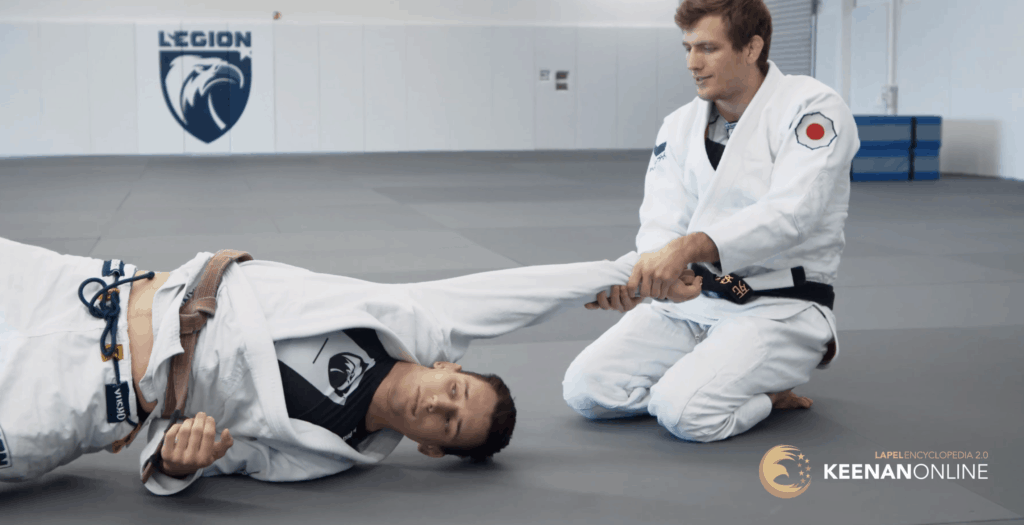
…rotate away from you, or…
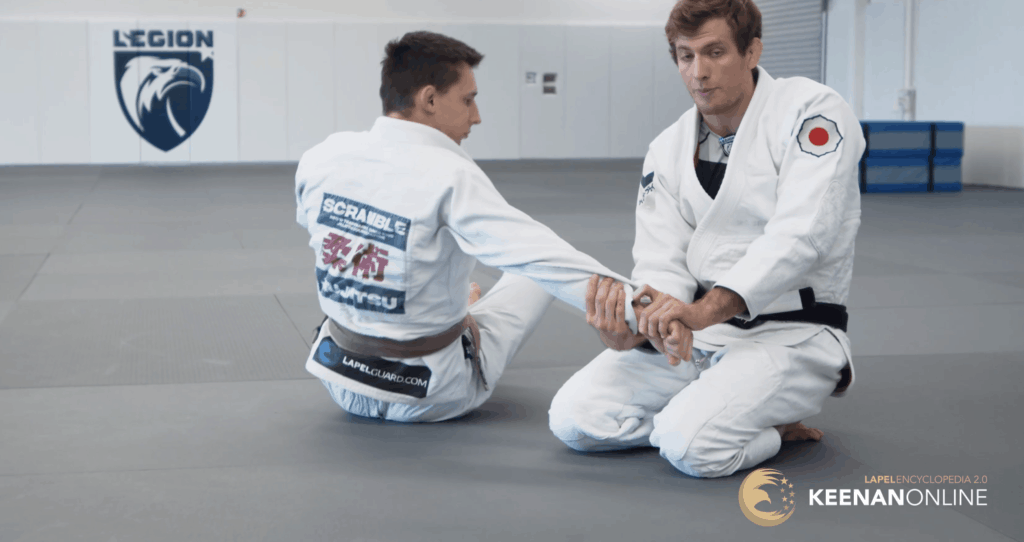
… rotate towards you in an effort to sit up and relieve some of the armbar pressure and eventually try to stack you.
Now, jiu jitsu 101 dictates that to stop our opponent rotating in these directions, all we need to do is simply…
… control the thumb.
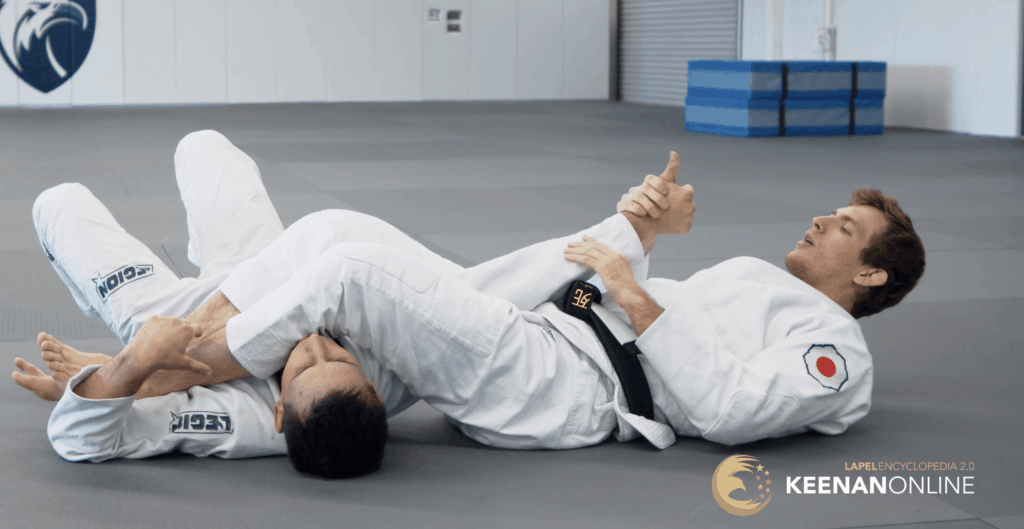
In theory, this is a sound principle, as if the thumb is anchored, then rotation through the rest of the body will be limited. Again…
… In theory.
In theory, I’m a great dancer…
… in practice, when I dance people tend to ask me if I need a doctor.
So, it’s best to take theory with a grain of salt.
And just like my dance moves, when it comes to live sparring rounds, theory often takes a back seat to reality.
When we take a step back, that is a step before the fully extended arm pictured above, your opponent will often adopt a grip defense as seen in the image below.
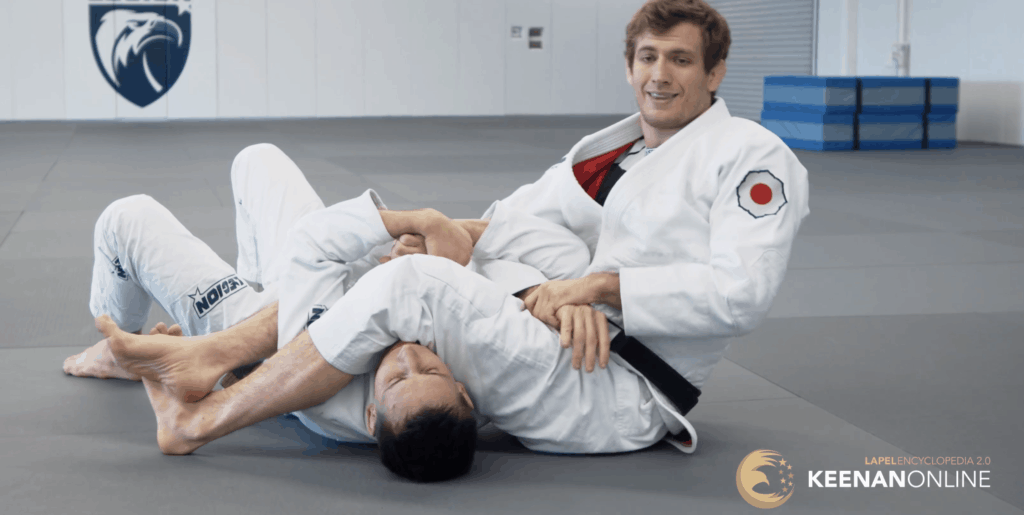
Now, this grip is by no means impossible to break, however as soon as you do break your opponent’s grip, and work to extend the arm, you also have to quickly transition your own two hands from a position near your opponent’s elbow to their wrist to achieve that armbar 101 thumb up hand position.
And after breaking their palm to palm, or mata leao, or what every defensive arm posture they take , 9.9999999 recuring times out of 10, your opponent is going to spin and fight tooth and nail to escape the armbar as you attempt to transition your grips.
It’s in this gap between grips, where you don’t have control over their wrist or the direction their thumb is pointing, that your opponent has the ability to rotate and escape.
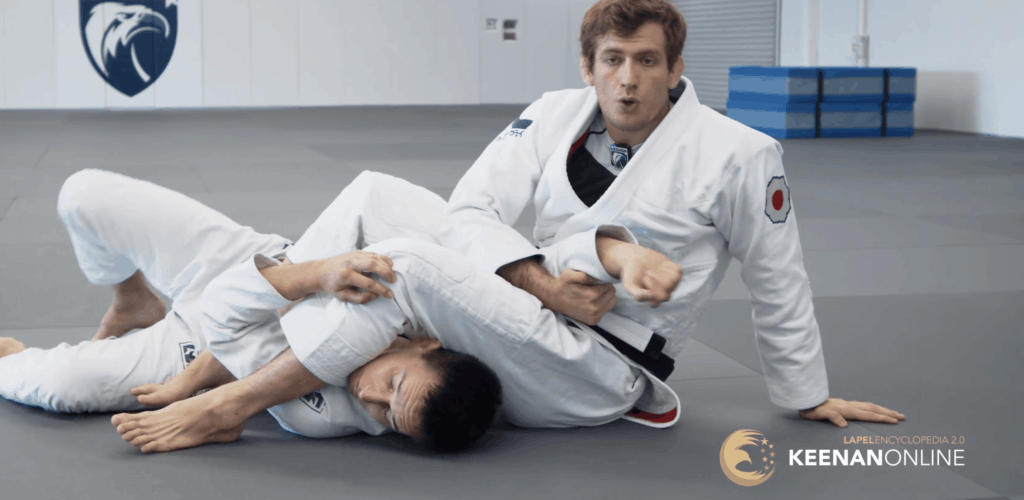
So, what do you do?
Well, you’ve probably guessed what the solution to this problem is by now…
… you cross your feet and open your knees.
Crossing your feet and opening your knees, taking care to apply more of the pressure on the knee in the opposite direction your opponent is trying to rotate, is an effective way to cut their exit strategy dead in its tracks.
So, if your opponent attempts to rotate away from you, you pressure down with the knee closest to their hips…
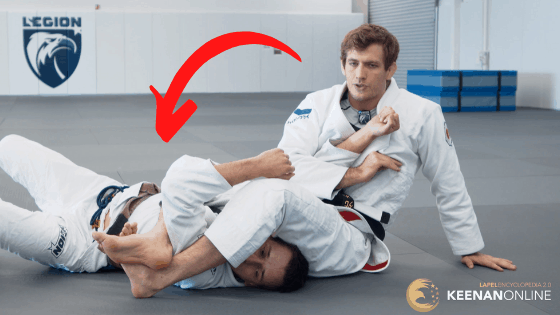
… and if they try to rotate towards you to sit up and stack you, simply apply pressure with your knee on their face (and enjoy every second of it).
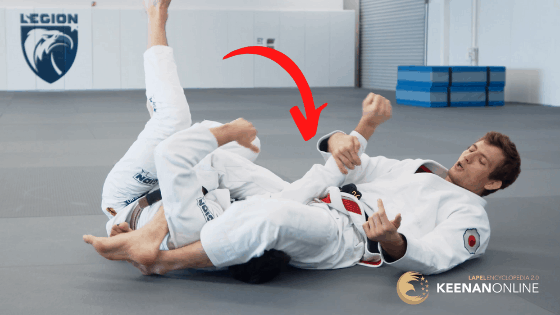
Ok, I hope this has helped clear up a little of the confusion as to why you may want to cross your feet when attacking the armbar.
I also hope that this article has been able to provide you with a beneficial tip for your game.
There are more details to this armbar, and more nuances for you to discover.
But, if you want to get the full lesson on this from Keenan – PLUS MANY MORE – all you have to do is click the button below and get started with Keenan Online now.

